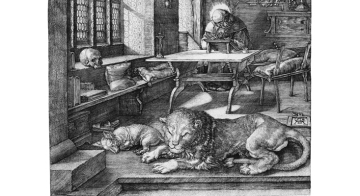Arthur Miller in Nautilus:
 Ross Goodwin has had an extraordinary career. After playing about with computers as a child, he studied economics, then became a speech writer for President Obama, writing presidential proclamations, then took a variety of freelance writing jobs. One of these involved churning out business letters—he calls it freelance ghostwriting. The letters were all pretty much the same, so he figured out an algorithm that would generate form letters, using a few samples as a database. The algorithm jumbled up paragraphs and lines following certain templates, then reassembled them to produce business letters, similar but each varying in style, saving him the job of starting anew each time. He thought he was on to something new but soon found out that this was a well-explored area. But it did pique his interest in the “intersection of writing and computation.”
Ross Goodwin has had an extraordinary career. After playing about with computers as a child, he studied economics, then became a speech writer for President Obama, writing presidential proclamations, then took a variety of freelance writing jobs. One of these involved churning out business letters—he calls it freelance ghostwriting. The letters were all pretty much the same, so he figured out an algorithm that would generate form letters, using a few samples as a database. The algorithm jumbled up paragraphs and lines following certain templates, then reassembled them to produce business letters, similar but each varying in style, saving him the job of starting anew each time. He thought he was on to something new but soon found out that this was a well-explored area. But it did pique his interest in the “intersection of writing and computation.”
Today, computers are creating an extraordinary new world of images, sounds, and stories such as we have never experienced before. Gerfried Stocker, the artistic director of Ars Electronica in Linz, Austria, says, “Rather than asking whether machines can be creative and produce art, the question should be, ‘Can we appreciate art we know has been made by a machine?’ ”
Much of the art computers are creating transcends the merely weird to encompass works that we might consider pleasing and that many artists judge as acceptable. Most programmed—rule-based—systems have constraints to prevent them from producing nonsense, but artificial neural networks can now generate poetry and prose that frequently passes over into that realm. One of Goodwin’s first creations, developed at NYU’s Interactive Telecommunications Program (ITP), is the remarkable word.camera. It takes a picture—of you or of whatever you are holding up to be photographed—identifies what it’s seeing, then generates words—poetry—sparked by the images it has identified. Show it an image of, for example, mountain scenery, and it might come up with seven or eight descriptive phrases—“blue sky with clouds,” “a large rock in the background.” Then it uses each to generate a sequence of words: “A blue sky with clouds: and a sweet sun carrying the shadow of the black trees and the spire are dark and the wind and the breath in the light are.” A little mysterious, but no more so than a lot of contemporary poetry.
More here.
